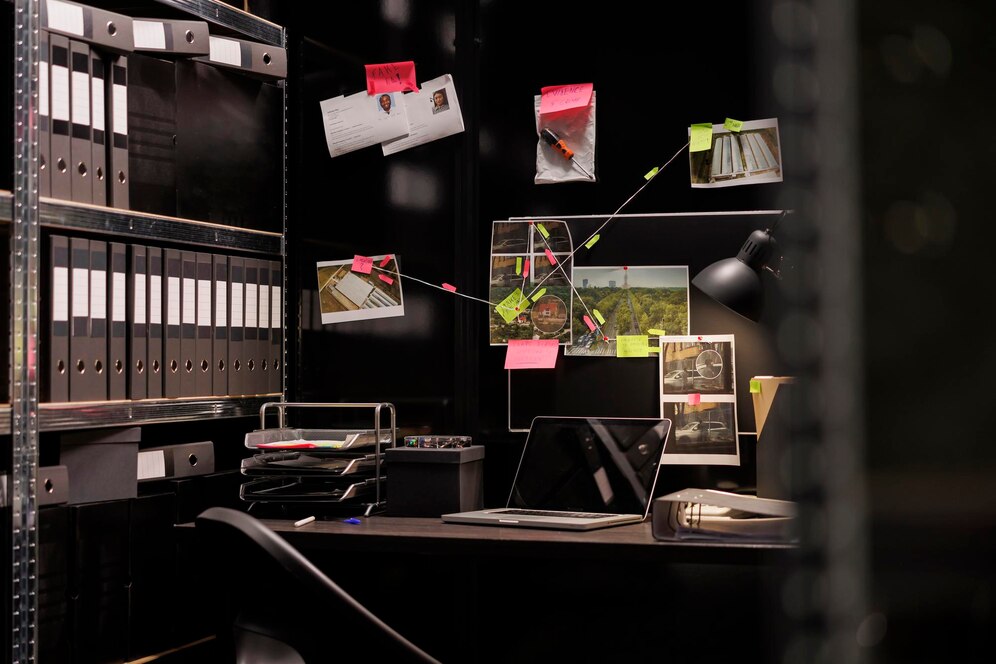In the digital ge, where data is both a commodity and a mystery, the discovery of a private office folder labeled “n-bfr939” containing random dancer footage has sparked curiosity and intrigue. What could this folder possibly contain? Why is it labeled so cryptically? And what is the significance of the random dancer footage? This article delves deep into the enigma surrounding this private office folder, exploring its potential origins, the nature of its contents, and the questions it raises about privacy, data security, and the unexpected intersections of art and technology. Whether you’re a tech enthusiast, a data security expert, or simply someone fascinated by digital mysteries, this article will provide a comprehensive exploration of the topic.
The Enigma of the Private Office Folder
What is a Private Office Folder?
A private office folder is typically a digital directory used to store sensitive or confidential information. These folders are often protected by encryption or password security to prevent unauthorized access. In the context of a corporate or professional environment, private office folders may contain everything from financial records to proprietary business information. However, the discovery of a folder labeled “n-bfr939” raises questions about its purpose and the nature of its contents. The alphanumeric code suggests a level of secrecy or specificity, possibly indicating that the folder is part of a larger system or database.
The Significance of the Label “n-bfr939”
The label “n-bfr939” is not just a random string of characters; it likely holds a specific meaning or code within the organization or system where it was found. Alphanumeric codes are often used in data management to categorize, sort, and retrieve information efficiently. The “n” could stand for a variety of things, such as “node,” “network,” or even a specific project name. The “bfr” might be an acronym for a department, a project, or a type of data. The numbers “939” could represent a date, a version number, or a unique identifier. Without additional context, it’s challenging to decode the exact meaning of “n-bfr939,” but it’s clear that the label is intentional and significant.
The Mystery of Random Dancer Footage
The inclusion of random dancer footage in the private office folder adds another layer of intrigue. Why would such footage be stored in a folder labeled with an alphanumeric code? Dancer footage could be related to a variety of contexts, from corporate events and marketing campaigns to artistic projects and internal training materials. The randomness of the footage suggests that it may not be part of a cohesive project but rather a collection of unrelated clips. This raises questions about the purpose of the footage and why it was deemed important enough to be stored in a private, possibly secure folder.
Exploring the Contents: What Could Be Inside?
Potential Types of Dancer Footage
The term “dancer footage” is broad and could encompass a wide range of content. It might include professional dance performances, amateur recordings, or even motion-capture data used in animation and gaming. The footage could be raw, unedited clips or polished, finalized videos. It might also include metadata such as timestamps, location data, or annotations. The randomness of the footage suggests that it could be a mix of different types, possibly collected over time for various purposes.
The Role of Metadata in Understanding the Footage
Metadata is data about data, and in the context of video footage, it can provide valuable insights into the content. Metadata might include information about when and where the footage was recorded, the equipment used, and even the individuals involved. If the random dancer footage includes metadata, it could help unravel the mystery of why it was stored in the private office folder. For example, if the footage was recorded at a specific corporate event, it might be related to a marketing campaign or internal training. If the metadata indicates that the footage was captured in a studio, it could be part of a larger artistic or technical project.
The Possibility of Encrypted or Hidden Content
Given that the folder is labeled with an alphanumeric code and stored in a private office directory, it’s possible that the contents are encrypted or otherwise hidden. Encryption is a common method used to protect sensitive information, and it could be that the random dancer footage is just a cover for more confidential data. Alternatively, the footage itself might contain hidden messages or data, either embedded in the video files or encoded in the metadata. This possibility adds another layer of complexity to the mystery and raises questions about the true nature of the folder’s contents.
The Intersection of Art and Technology
Dance as a Form of Data
Dance is often seen as a purely artistic endeavor, but in the digital age, it can also be viewed as a form of data. Motion-capture technology, for example, records the movements of dancers and translates them into digital data that can be used in animation, gaming, and virtual reality. The random dancer footage in the private office folder could be part of a larger project that explores the intersection of art and technology. It might be used to study movement patterns, develop new animation techniques, or create immersive digital experiences.
The Role of Artificial Intelligence in Analyzing Dance Footage
Artificial intelligence (AI) is increasingly being used to analyze and interpret complex data, including video footage. AI algorithms can be trained to recognize patterns in movement, identify specific dance styles, or even generate new choreography based on existing footage. If the random dancer footage in the private office folder is part of a research project, it’s possible that AI is being used to analyze the data. This could have applications in fields ranging from entertainment to healthcare, where understanding human movement is crucial.
The Ethical Implications of Storing and Analyzing Dance Footage
The storage and analysis of dance footage raise important ethical questions, particularly when it comes to privacy and consent. If the footage includes recordings of individuals, it’s essential to consider whether they have given their consent for their images to be used. Additionally, the use of AI to analyze dance footage could have implications for the future of dance as an art form. Will AI-generated choreography replace human creativity, or will it serve as a tool to enhance and expand the possibilities of dance? These are questions that need to be addressed as technology continues to evolve.
Frequently Asked Questions (FAQs)
1. What is the significance of the label “n-bfr939”?
The label “n-bfr939” is likely an alphanumeric code used to categorize or identify the contents of the private office folder. The exact meaning of the code is unclear without additional context, but it suggests that the folder is part of a larger system or database.
2. Why would random dancer footage be stored in a private office folder?
Random dancer footage could be stored in a private office folder for a variety of reasons, including corporate events, marketing campaigns, artistic projects, or technical research. The randomness of the footage suggests that it may not be part of a cohesive project but rather a collection of unrelated clips.
3. Could the dancer footage be encrypted or contain hidden content?
It’s possible that the dancer footage is encrypted or contains hidden content, especially if the folder is labeled with an alphanumeric code and stored in a private directory. Encryption is a common method used to protect sensitive information, and the footage itself might contain hidden messages or data.
4. How is artificial intelligence used in analyzing dance footage?
Artificial intelligence can be used to analyze dance footage by recognizing patterns in movement, identifying specific dance styles, or generating new choreography based on existing footage. AI algorithms can process large amounts of data quickly and provide insights that might not be apparent to the human eye.
5. What are the ethical implications of storing and analyzing dance footage?
The storage and analysis of dance footage raise important ethical questions, particularly regarding privacy and consent. It’s essential to consider whether individuals in the footage have given their consent for their images to be used. Additionally, the use of AI in analyzing dance footage could have implications for the future of dance as an art form.
Conclusion
The discovery of a private office folder labeled “n-bfr939” containing random dancer footage is a fascinating mystery that touches on issues of data security, privacy, and the intersection of art and technology. While the exact nature and purpose of the folder remain unclear, it serves as a reminder of the complexities and ethical considerations involved in managing digital data. As technology continues to evolve, it’s crucial to approach these issues with a sense of curiosity and responsibility, ensuring that the benefits of innovation are balanced with respect for individual privacy and artistic integrity. Whether the folder is part of a corporate project, a research initiative, or an artistic endeavor, it highlights the endless possibilities and challenges of the digital age.

